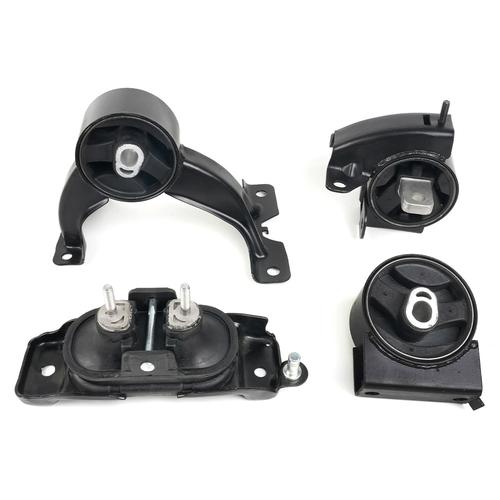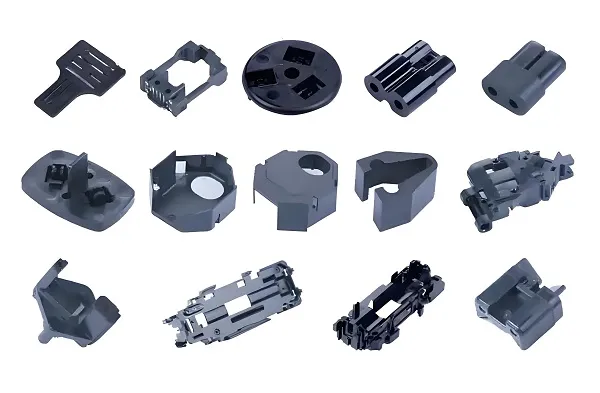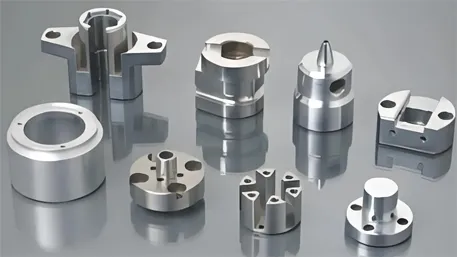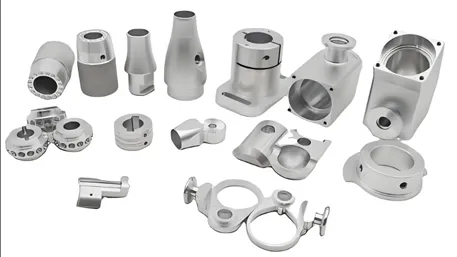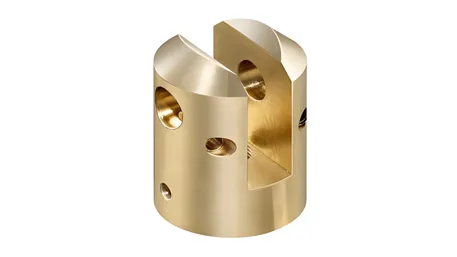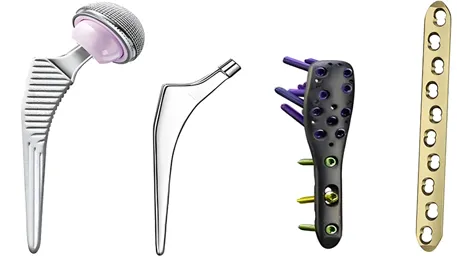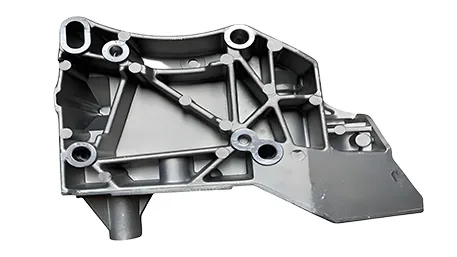In the automotive power system, engine brackets serve as crucial components connecting the engine to the vehicle body. Their performance directly impacts the vehicle’s NVH (Noise, Vibration, and Harshness) characteristics, driving stability, and service life. Traditional standardized brackets often encounter issues such as fatigue fractures and excessive vibration transmission under complex operating conditions. In contrast, customized CNC machined engine brackets achieve an upgrade from “basic support” to “precise adaptation” through data-driven approaches and precision manufacturing. The following analysis covers customization advantages, core processes, and other key aspects.
1. Why Can’t Standardized Brackets Meet the Requirements of Modern Vehicles?
Q: What are the Core Advantages of Custom Engine Brackets?
Standard engine brackets are mostly produced through stamping or casting processes, with notable limitations:
- Imbalance between Strength and Lightweighting: Designed with uniform material thickness, they fail to balance high load-bearing requirements with lightweight goals, resulting in redundant material in some areas and increasing overall vehicle weight.
- Poor Adaptability to Operating Conditions: It’s challenging to optimize the structure according to the vibration frequencies and torque output characteristics of different engine models (gasoline/diesel/hybrid), often leading to resonance and abnormal noises.
- Insufficient Precision: Traditional machining methods result in large tolerances for mounting holes (±0.2mm), affecting the assembly accuracy between the engine and the vehicle body and potentially causing issues like poor sealing.
Custom engine brackets focus on “precise load-bearing”:
- Deep Adaptation to Operating Conditions: The bracket structure is customized based on engine weight (100 – 300kg), torque (200 – 600N·m), and vibration frequency (50 – 200Hz). For example, brackets for hybrid vehicles are reinforced for impact resistance, and topology optimization reduces stress concentration areas.
- Data-Driven Design: Finite Element Analysis (FEA) simulates stress distribution under extreme conditions (such as rapid acceleration and bumpy roads). This enables precise calculation of bracket wall thickness (2 – 5mm) and rib layout, ensuring that stress values in key areas remain below 70% of the material’s yield strength.
Case: After a car manufacturer adopted custom engine brackets, the vehicle’s NVH performance improved by 20%, and the bracket’s fatigue life extended from 100,000 km to 150,000 km, verifying the significant effectiveness of customization.
2. How Do Core Processes of Custom Brackets Achieve Precision and Strength Breakthroughs?
1. 5-Axis Machining: Complex Structures in One Setup
The irregular curved surfaces and multi-directional mounting surfaces of engine brackets require 5-axis CNC machines for high-precision machining:
- Angled Machining: By rotating the A/B axes (±30°), the tool cuts the inclined surfaces and grooves of the bracket at the optimal angle, controlling the surface roughness below Ra3.2μm, which is 40% more precise than 3-axis machining.
- Full-Process Integrated Machining: A zero-point positioning system (repeatability ≤0.005mm) completes milling, drilling, boring, and other processes in one clamping, eliminating cumulative errors from multi-step clamping and ensuring that the tolerance of mounting hole spacing is controlled within ±0.015mm.
2. Composite Milling and Welding Process: Balancing Strength and Lightweighting
- Milling Process: For high-strength aluminum alloy or magnesium alloy materials, high-speed milling (spindle speed 8,000 – 12,000rpm) removes excess material, creating lightweight hollow structures. This reduces the weight by 15 – 25% compared to traditional brackets.
- Precision Welding: For split-type brackets, laser welding technology (weld width 0.3 – 0.5mm) is used, ensuring that the welding strength exceeds 90% of the base material while minimizing welding deformation (deformation ≤0.1mm).
3. End-to-End CNC Machining Data Closed-Loop
- Programming Phase: When generating tool paths with UG/CAM software, it simultaneously simulates the bracket’s deformation under load, optimizing the machining sequence to prevent workpiece deformation caused by cutting forces.
- Machining Execution: Real-time monitoring of over 20 parameters, including spindle torque (set to a maximum of 10N·m for aluminum alloy machining) and feed rate (1,500 – 2,500mm/min), automatically adjusts cutting parameters when the vibration amplitude exceeds 0.03mm, increasing tool life by 30%.
- Inspection Phase: A Coordinate Measuring Machine (CMM) scans the bracket’s geometric tolerances (flatness ≤0.02mm, perpendicularity ≤0.03mm), and the data is uploaded to the MES system in real-time, creating a traceable machining record.
3. Quality Control: Rigorous Verification from Material to Finished Product
1. Multi-Dimensional Performance Inspection System
- Strict Material Screening:
-
- Aluminum Alloy Brackets: Spectral analysis verifies alloy composition (e.g., for 6061-T6 material, Si≤0.4%, Mg≤1.5%), and hardness testing (HB90 – 110) ensures strength and toughness.
-
- Steel Brackets: Magnetic particle inspection detects surface cracks, and tensile tests verify yield strength (≥350MPa).
- Finished Product Functional Tests:
-
- Static Load Test: Apply 1.5 times the rated load (e.g., 500kg) for 1 hour, with deformation <0.5mm.
-
- Fatigue Life Test: Simulate 1 million vibration cycles (amplitude ±2mm, frequency 50Hz) without crack generation.
-
- Vibration Transmission Test: Measure the vibration attenuation rate transmitted from the bracket to the vehicle body, requiring it to reach over 60%.
2. Intelligent Defect Prevention Technology
- First-Article Five-Inspection System: Programmers, operators, quality inspectors, process engineers, and equipment technicians jointly verify 15 key indicators of the bracket, such as mounting hole diameter (±0.01mm) and wall thickness (±0.05mm), intercepting dimensional deviations.
- AI Visual Full Inspection: Linear array cameras complete surface scanning in 0.3 seconds, accurately identifying defects like scratches (depth >0.1mm) and sand holes, with a miss rate of less than 0.01%, meeting the zero-defect acceptance criteria of OEMs.
4. How Does Small-Batch Customization Balance Efficiency and Precision?
Q: Does Custom Production Mean High Costs and Low Efficiency?
Three innovative processes have shortened the customization cycle by 40% and reduced costs by 20%:
- Modular Process Library: Feature modules for bracket mounting surfaces, ribs, and connection holes reuse 70% of processing parameters for similar parts, cutting programming time from 8 hours to 3 hours.
- Automated Flexible Production: Truss robots with quick-change fixtures (model change time <3 minutes) enable small-batch production (50 – 300 pieces) of multiple varieties, increasing equipment utilization to over 85%.
- Tool Life Prediction: IoT sensors monitor tool wear in real-time (e.g., 100 pieces per cutting edge), and the system automatically reminds for tool changes, preventing dimensional fluctuations caused by tool wear.
5. Core Considerations for Selecting Custom Engine Brackets
- Data Traceability: Qualified suppliers should provide FEA analysis reports, CNC machining parameter logs, and full-dimension inspection reports to ensure that the performance of each bracket is quantifiable and verifiable.
- Composite Technical Capabilities: Required capabilities include 5-axis machining, precision welding, heat treatment (such as T6 aging), and other full-process competencies to meet the requirements of different materials and operating conditions.
- Response Speed and Adaptability: Sample delivery within ≤20 days after drawing confirmation supports synchronous development with OEMs; the ability to design brackets specifically for new energy vehicle models (e.g., adapting to the high torque output characteristics of electric motors).
Conclusion
The value of custom CNC machined automotive engine brackets lies in defining the “precision of support” with data and ensuring “adaptability to operating conditions” through advanced processes. With the automotive industry trending towards lightweighting and intelligence, customized solutions featuring “data-driven design + precision manufacturing processes” are becoming crucial for automakers to enhance overall vehicle performance. From the stable operation of traditional fuel vehicles to the quiet experience of new energy vehicles, custom engine brackets will support “long-lasting reliability” with “millimeter-level precision,” safeguarding the efficient operation of power systems.
(Contact us now to obtain an exclusive custom engine bracket solution and a free mechanical performance analysis)
